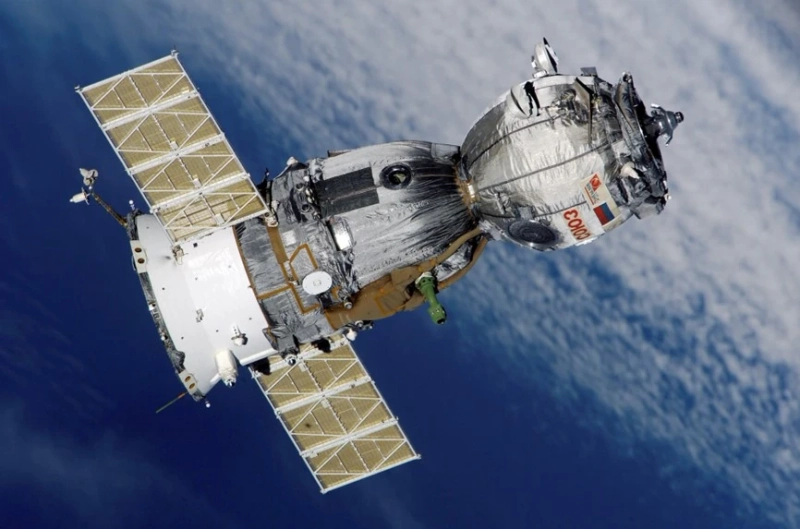Space Carbon Fiber Composite refers to advanced materials used in space exploration and satellite technology. It involves carbon fiber-reinforced composites with exceptional strength and lightweight properties. These materials are designed to withstand the extreme conditions of space, including temperature variations, radiation, and vacuum, while minimizing the overall weight of spacecraft and satellite components. Space carbon fiber composites are commonly used in the construction of satellite structures, payload fairings, and other components to enhance structural integrity and reduce launch costs. Their high strength-to-weight ratio makes them ideal for improving the efficiency and durability of space-related applications.
The space carbon fiber composite market was valued at $393.6 million in 2022 and is projected to reach $1,679.7 million by 2033. The space carbon fiber composite market is expected to be driven by the increasing demand for small satellites with a lightweight profile for communication and Earth observation applications, the growing commercial space sector, and the development of reusable launch vehicles. Additionally, advancements in manufacturing technologies and materials are also key factors that are expected to drive market growth.
PAN-Based Raw Material Segment to Dominate the Global Space Carbon Fiber Composite Market
Space system manufacturers are continuously working on developing efficient and cost-effective satellites as well as developing reusable launch vehicles. The PAN-based raw material segment is expected to dominate the market during the forecast period from 2023 to 2033. The factor contributing to this growth is the increasing demand for cost-effective carbon fiber composites, which provide immense strong physical properties.
Impact of Space Carbon Fiber Composite Market
The study also discusses the potential impact of other factors, such as geopolitical factors, economic factors, and policy changes, on the space carbon fiber composite market. It also addresses the challenges and limitations of carbon fiber composites in space applications when considering a larger scale of deployment, such as the high cost of production, complex manufacturing processes, and stringent regulatory requirements for their development. Furthermore, it presents a detailed analysis of the competitive landscape of the space carbon fiber composite market, including the profiles of the key players in the industry. It provides the aforementioned segmentation into their product portfolio, manufacturing capabilities, research and development activities, and business strategies. The profile also highlights the key collaborations, partnerships, and acquisitions in the industry, driving the market dynamics.
Space Carbon Fiber Composite Market (by Manufacturers)
Space system manufacturers are continuously working on developing efficient and cost-effective satellites as well as developing reusable launch vehicles. The PAN-based raw material segment is expected to dominate the market during the forecast period from 2023 to 2033. The factor contributing to this growth is the increasing demand for cost-effective carbon fiber composites, which provide immense strong physical properties.
Request A Free Detailed Sample on Space Carbon Fiber Composite Market!
The high-modulus segment is expected to lead the global space carbon fiber composite market in terms of tensile modulus. This growth is attributed to the excellent stiffness and high strength-to-weight ratio of high modulus carbon fiber composites.
North America to Dominate Global Space Carbon Fiber Composite Market Over the Forecast Period
North America accounted for the highest share in the space carbon fiber composite market in 2022, owing to the increasing space activities, such as the launch of satellite mega-constellations and the development of reusable launch vehicles and small launch vehicles. Moreover, the region is home to several key companies that are engaged extensively in developing and providing advanced materials for space applications.
Competitive Landscape
The competitive landscape of the space carbon fiber composite market consists of different strategies undertaken by major players across the industry to gain market presence. Some of the strategies adopted by advanced space composite providers are contracts, agreements, new product launches, business expansions, partnerships, and collaborations. Among all the strategies adopted, contracts, agreements, partnerships, and collaborations have been the most prominent strategy adopted by the players in the space carbon fiber composite market.
Download Our ToC - Click Here!
Most of the space carbon fiber solution providers have numerous tie-ups with various national space agencies and commercial space players. Innovation and development have been the key factors for large-scale growth in this market. To increase their overall global footprint, the space carbon fiber providers are expanding their businesses and are also entering into strategic partnerships to increase their customer base.
Key Questions Answered by This Report:
What are the underlying structures resulting in the emerging trends within the global space carbon fiber composite market?What is the scope for new original equipment manufacturers (OEMs) and other players to enter the market?What are the driving and challenging factors that are attributing to the growth of the space carbon fiber composite market?Which application and end user are expected to be leading the space carbon fiber composite market by 2033?What was the market value of the regions in the space carbon fiber composite market in 2022, and how is the market estimated to grow during the forecast period 2023-2033?What are the R&D initiatives and investment scenarios in the space carbon fiber composite market?How is the industry expected to evolve during the forecast period 2023-2033?What are the key developmental strategies that are implemented by the key players to sustain the competitive market?

